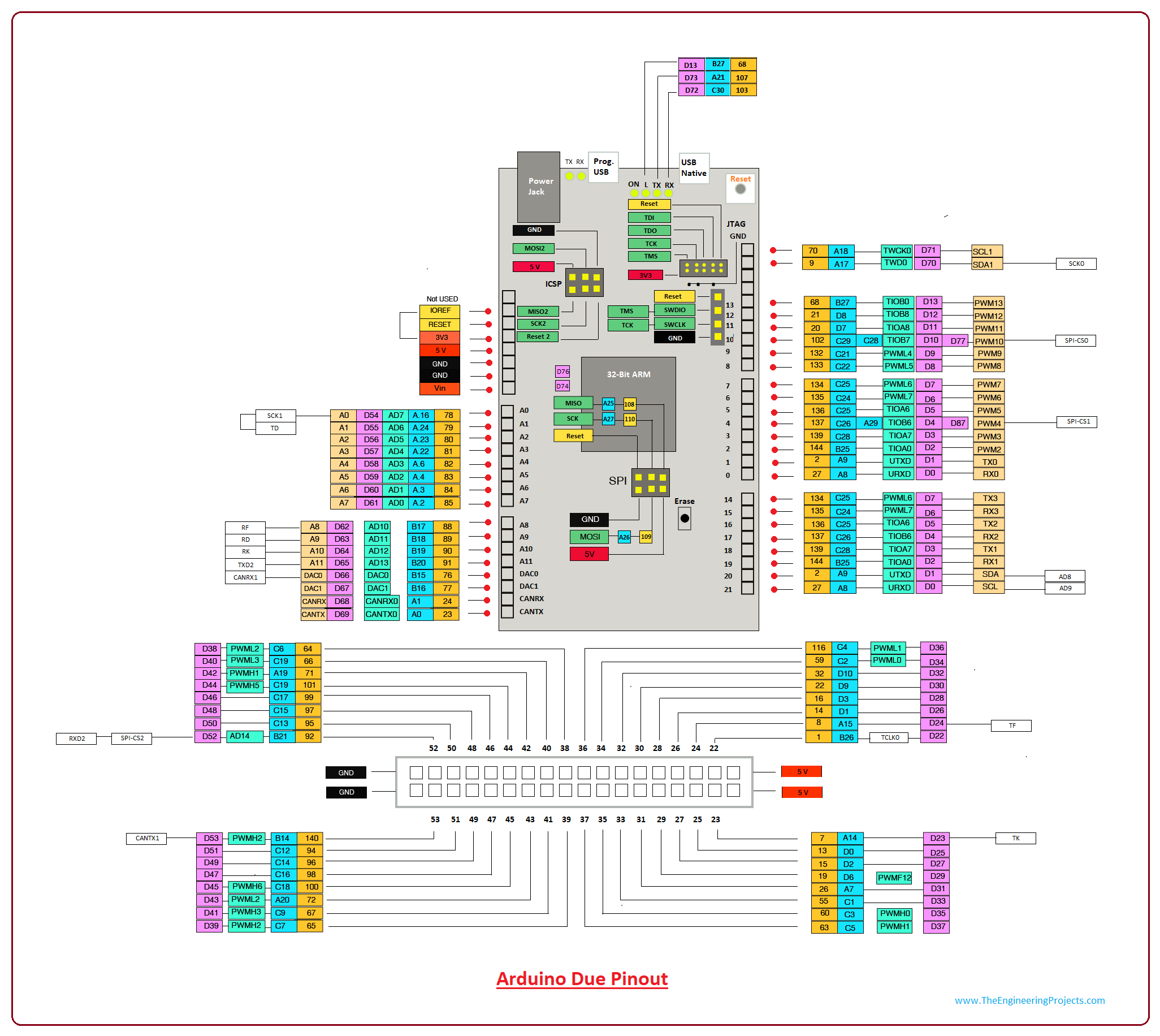
Arduino nano pinout funmove code#
I'll show you the code first and then explain it. By using some timer tricks, we can make it generate 3 PWM signals at the correct frequency. The specs require a PWM signal with a frequency of 25 kHz (with tolerance, 21-28 kHz), but our usual analogWrite function doesn't output anywhere near that frequency. Important: the VIN pin on the Arduino has no polarity protection, double check your connections before turning it on! Note: if you're using really shitty fans, you should add a flyback diode between the ground and power pins of each fan. Note that the Arduino can only take up to 12V as input in the VIN pin, and the Arduino and the fan MUST share the same ground! If you have a 24V fan, you'll have to power both the fan and the Arduino externally. If unsure, power the Arduino and the fan in parallel with a 5V supply connected to both the fan and the 5V pin. If you have a 5V fan, you can power it directly from the 5V pin on the Arduino, but I don't recommend it if it draws more than 4-500 mA, as it could damage the voltage regulator on the Arduino, and also generate noise that could cause the Arduino to be unstable. It's a good idea to put a diode in front of the VIN pin if you have it, that way you can connect both the 12V and the USB without damaging anything. If you have a 12V fan, the best way to power it is to put the Arduino and the fan in parallel, using the VIN pin to power the Arduino. Polarity protection is a requirement of the spec so even if you force it, you won't damage the motherboard or the fan. Notice the presence of a notch on the connector: this is to ensure that you don't connect it backwards, and also to ensure compatibility with older 3 pin connectors. Yellow: +5V, +12V or +24V (depends on fan model, usually 12V for desktops, 5V for laptops).This is the pinout of a standard PWM fan: We can connect up to 3 PWM fans to a single Arduino. The exact specs of these fans were made by Intel in the mid-00s and are available here: Original | Latest version | Noctua Connecting the fan to the Arduino This allows the BIOS to change the fan speed according to the current temperatures using a PWM signal instead of changing the voltage of the fan, which means that motherboards are cheaper to make (less voltage regulators), but also that fans are much easier to control, since DC motors won't even move below a certain voltage threshold. Nano can do all the tasks that an Arduino Uno or Mega can do but a small form factor makes it quite advantageous for compact projects.How to properly control PWM fans with Arduino IntroductionĬomputers have been using PWM-controlled fans for ages now (they're the ones with a 4 pin connector). Arduino Nano is one of Arduino boards with a small form factor.

It is used to connect an external power supply as a reference voltage.ĭifferent boards of the Arduino have different pinout configurations according to which different tasks can be accomplished. RESET: There are two pins labeled as RST, which are used to reset the board.ĪREF: One pin of the Arduino Nano is referred to as an analog reference pin. Ground Pins: There are two pins that can be used as a ground, and they are labeled as “GND”. Power pins: There are 3 different pins providing three different options for the power input and labeled as 5V which means providing constant five volts, Vin which means providing irregular voltage, and 3.3V means providing constant 3.3 volts. Used for the SPI as a master in slave output (MISO)Īnalog pins: There are 8 pins that are used for the Analog inputs and are labeled as A0 to A7, where A4 and A5 are used by I2C communication, A4 as SDA, and A5 is used by SCL. Used for the SPI as master output slave input (MOSI) and Timer (OC2A)
Arduino nano pinout funmove serial#
Used for the serial communication as receiver RX Used for the serial communication as transmission TX What is the pinout configuration of Arduino NanoĪrduino Nano board contains thirty pins that are used for different purposes, and this usage of the pins is explained in detail in the next sections.ĭigital pins: There are fourteen pins that are used for the Digital inputs/outputs and are labeled as D0 to D13, where some digital pins are used for specific purposes, which are described in the table below: Digital Pins In this write-up, we will explore the pin configuration of the Arduino Nano in detail. In order to understand the Arduino boards and to use them effectively one must first go through the pin configuration of the specific board. Arduino Nano is a microcontroller board that is similar to the Arduino Uno board but small in size and the for readers who are not familiar with microcontrollers microcontrollers are devices that contain a CPU, RAM, ROM, and I/O pins on a single integrated circuit and are used in electronic projects.


 0 kommentar(er)
0 kommentar(er)
